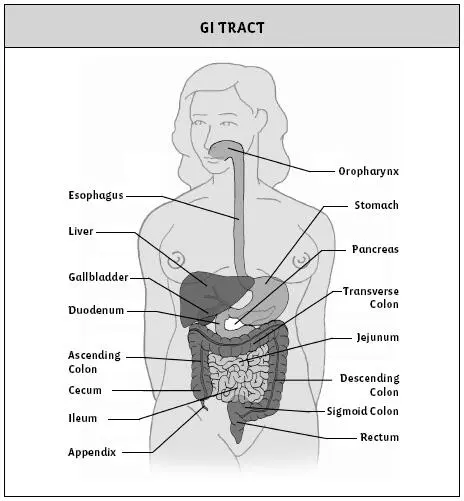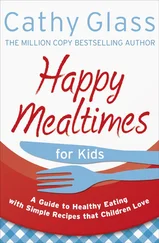10. “I can’t stop farting in public!”
You’re sitting in class or at a meeting when suddenly a noxious odor seeps from your body. You avert your eyes or stare suspiciously at that annoying guy from accounting, trying to pin the blame on him. We’ve all been there at one time or another. But for some women, this kind of deviousness is a way of life.
First try to reduce the foods that cause gas. Do you need to eliminate milk products, gas-forming vegetables or other foods? If, after changing your diet, you continue to have this problem, you may need to be evaluated with breath tests. Could you have a parasite? Does simethicone (Gas-X) or enteric-coated peppermint capsules (do not use if you have heartburn) help? If you still have gas after changing your diet, consider a diet that eliminates fructose, lactose and other carbohydrates that cause gas, or a specific carbohydrate diet, or consider trying probiotics. If flatulence persists, you could try purchasing carbon filter underwear, which is available online. This could help absorb the odor, although not the noise.
The following questions and answers will help you understand your digestive system:
What is normal digestive function?
Remember these four facts:
1 There’s a wide range of normal! Bowel movements can range anywhere from twice per day to three times per week. It’s about understanding what’s normal for you. If something feels off, don’t ignore it. Bowel movements are affected by where you are in your menstrual cycle. Due to hormonal changes, many women have diarrhea or loose stools during their period, and constipation leading up to it. Some women actually look forward to their periods to empty out their bowels, not just to reassure them that they aren’t pregnant.
2 Stool form varies from person to person and from event to event. No, it’s not always a firm, one-inch-wide and six-inch-long form with a curled end. It can depend on your diet and fluid intake. “Paperless” was the ideal state of the bowels described by Heinrich Böll in Group Portrait with Lady, in which the stool comes out in one complete piece and leaves no residue behind. However, not many people have this kind of stool.
3 Gas occurs in everyone! In fact, we all pass between a half quart (500 mL) to a quart and a half (1500 mL) per day if we’re normal. Some people make more gas than others. The amount depends on what you eat. It’s normal to pass gas ten to twenty times per day.
4 Check your meds! Medications, including herbs and over-the-counter medications, can sometimes cause constipation, diarrhea or heartburn. But remember: most people have heartburn at one time or another—40 to 50 percent of Americans monthly and about 10 to 20 percent weekly.
How soon after I eat should food be expelled from the body?
You should eliminate that delicious sushi feast or burrito dinner within three to five days.
As a woman, how does my digestive system differ from a man’s?
Well, we’re all human, and for men and women, the digestive tract is made up of the same parts. It is a hollow tube that travels from the mouth to the anus. When food is ingested, it migrates from the mouth through the esophagus into the stomach and then into the small intestine. The small intestine comprises the duodenum (which is short), followed by the jejunum and finally the ileum. Then, remaining food goes to the large intestine or colon. The small intestine is twenty to thirty feet long, while the colon is three to five feet in length.
But there are differences. A woman’s esophagus is shorter than a man’s regardless of her height. Also, a woman’s colon is often longer and “twistier” than a man’s. This could contribute to more constipation, although no one has looked at the association of the number of bowel movements with the length of the colon. (It definitely makes it harder to perform a colonoscopy on women!) Finally, what’s left of the food after its digestive tract travel is eliminated as waste.
Here’s a handy diagram:

Figure 1-1. The parts of the gastrointestinal (GI) tract with their locations are indicated. The food travels from the mouth through the esophagus, into the stomach and then out of the stomach into the small intestine. The small intestine is made up of (1) the duodenum, which is joined to the stomach in the upper right abdomen and then descends for a short distance before it heads across the belly to the left side, where it connects to the jejunum in the upper abdomen; (2) the jejunum; and (3) the ileum, which connects to the colon (large intestine) at the level of the cecum in the lower right side of the abdomen. There is no clear distinguishing characteristic marking the junction of the jejunum and the ileum. After the small intestine, the food travels into the colon at the level of the cecum. The main parts of the colon from cecum to rectum are indicated on the diagram. Bile is made in the liver, stored in the gallbladder and excreted into ducts. The common bile duct enters the small intestine in the duodenum. The pancreas makes digestive enzymes that are excreted into ducts, with the main duct entering the duodenum, usually with the common bile duct.
What does my digestive system do?
1 The saliva in the mouth moistens the food and starts the digestion process.
2 In the stomach, food gets mixed together, then broken down into smaller pieces, and digestion really starts in earnest with the help of acid and enzymes.
3 The small intestine breaks down the food substances with the help of more enzymes and proteins and absorbs nutrients and water into the body.
4 The large intestine (colon) takes out even more water to give you the stool form that we all know.
5 The intestines, particularly the colon, harbor helpful and harmful bacteria that produce nutrients and digest the food you eat.
6 The gut acts as a barrier to harmful substances and pathogens (organisms), keeping them out of the body.
7 The gut contributes to the immune response, making antibodies and fighting off disease.
8 The digestive system produces hormones and neurotransmitters that affect blood sugar, appetite and bowel function.
9 The digestive system eliminates indigestible substances as stool.
It’s disgusting to think that I have “germs” inside me. What do these bacteria do?
There are one hundred trillion bacteria in your body. A good number of these are in your digestive tract. Most times they’re working in perfect harmony with the body, helping to fight off bad bacteria and helping to digest your food. They make vitamins, as well as substances to help your body absorb the vitamins you ingest. But sometimes the ratio of good to bad bacteria becomes unbalanced, and symptoms or disease may become obvious. There is likely a healthy flora and it is unlikely to be the same in everyone. Lactobacilli and bifidobacteria are considered to be healthy bacteria.
What do bacteria have to do with weight gain and weight loss?
The more we learn about bacteria, the more we realize how much they influence our health. Take mice, for instance. Lean mice have different bacteria than obese mice, and it’s not just a result of the type of food the mice are eating. When obese mouse bacteria take up residence in a lean mouse, the lean mouse gains weight, even without eating any more food. There are two main kinds of bacteria that seem to change with obesity in mice. The obese mice have fewer Bacteroidetes and more Firmicutes. Human bacteria can take up residence in the intestines of mice that are raised without bacteria. When one group of mice colonized with human bacteria was fed a high-fat, high-sugar diet, typical for a Western diet, the mice gained weight and grew more Firmicutes and fewer Bacteroidetes. In mice fed a low-fat, plant-based diet, the bacteria ratios were reversed. The change in bacteria to a high concentration of Firmicutes could occur in less than one day when the mice fed a plant-based diet were switched to a high-fat, high-sugar diet. It appears the bacteria may be important in people, too. In obese twins, there are fewer Bacteroidetes and more Actinobacteria than in lean twins. The bacteria that are present in obese individuals are more efficient at extracting calories from carbohydrates. Limited studies show that weight reduction in adolescents results in a change of bacterial flora. Furthermore, studies show that after gastric bypass surgery, patients had a change in their bacteria.
Читать дальше













